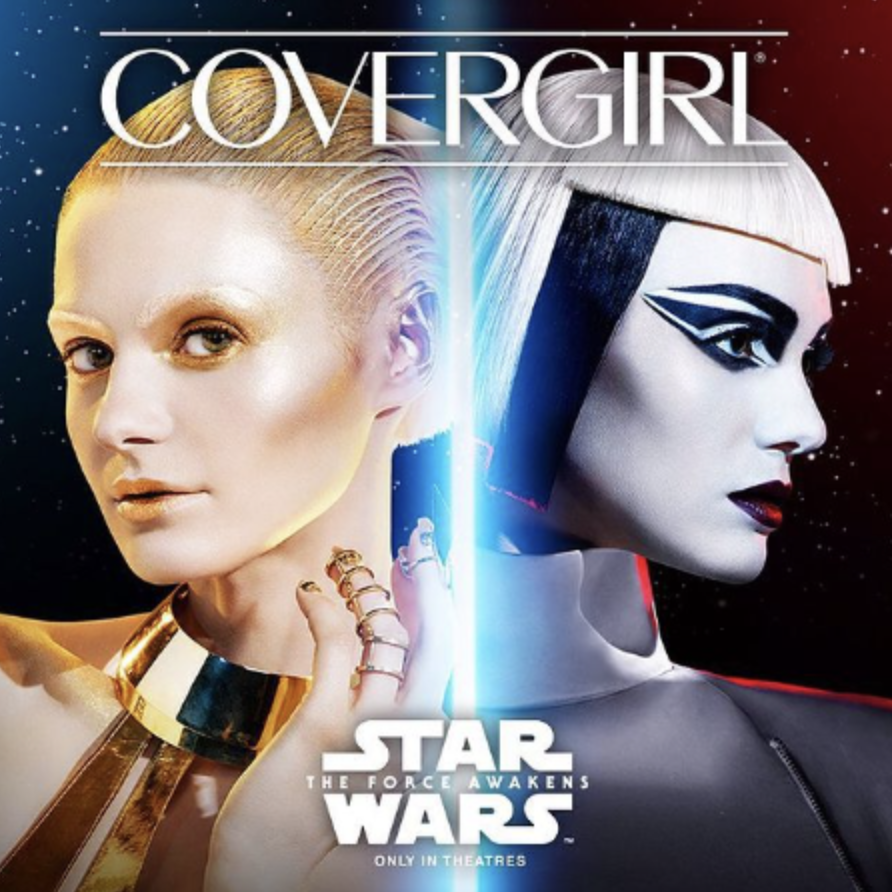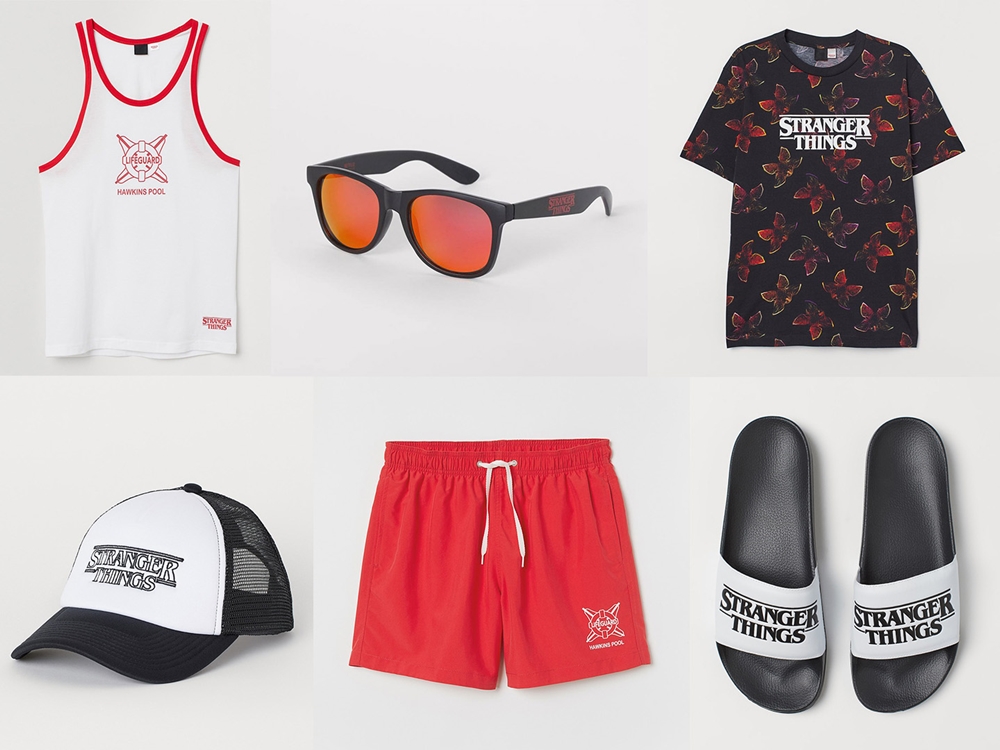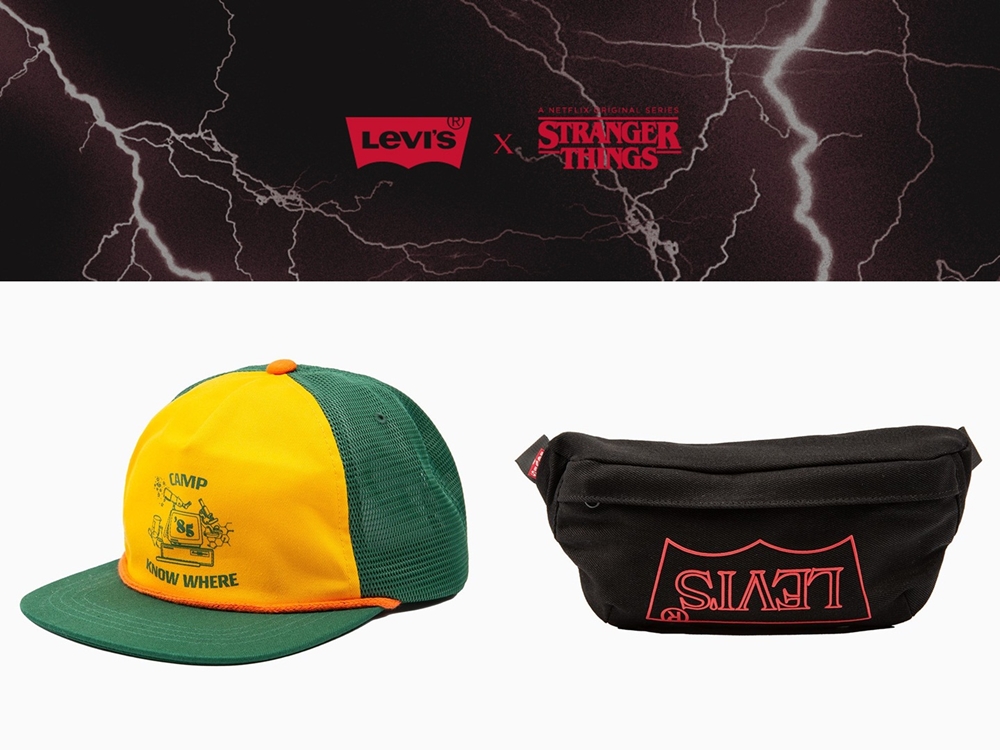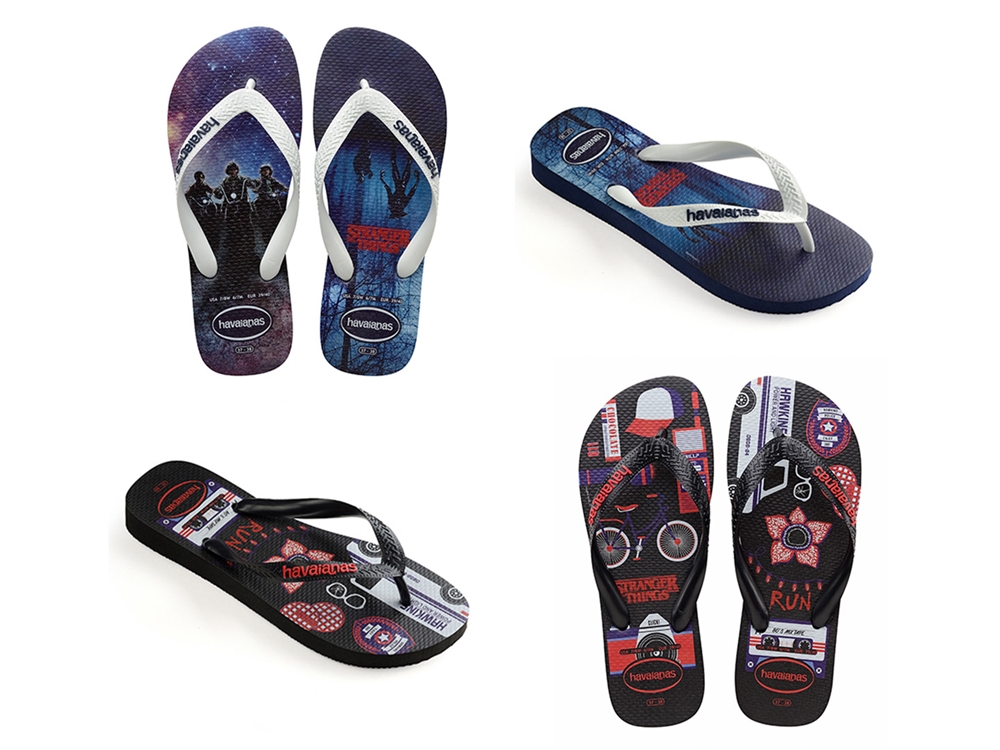Co-Branding
What it co branding and why your brand should consider implementing co branding into the brand strategy?
Pie and sauce, Vegemite and toast, John John Florence and Margaret River: Some things are just made for each other. The same is applicable to brands. COG Branding is a leading Sydney marketing agency that facilitates brand collaborations. Below is what we know to be true with co-branding.
When two brand partner together strategically it’s called ‘co-branding’. Co-branding is a collaboration between two companies (though not to be confused with co-marketing). Here companies combine their assets and resources, creativity and existing customer bases to form a product that is greater than the sum of its own individual parts. This is called the “halo effect”, otherwise known as a win-win situation.
It’s often seen as a great strategic move because the two brands can share the risk between their brands, and both companies can widen their audiences, solidify consumer trust, and ideally drive more sales after engaging the co-branding partnership.
There are co-branded products and services everywhere, within your huge fast food giants like McFlurry (McDonalds) and M&MS’s, to GoPro and RedBull (the RedBull Stratos project).
Co branding is a popular and strong way to make emotional connections to consumers. Data from Visual Objects suggest 71% of consumers enjoy Co-Branding partnerships and the new product options they bring about.
In this article we will cover the below –
-
What is co-branding?
-
Benefits of co-branding
-
What makes co-branding successful?
-
Co Branding and Stranger Things
-
Co Branding between Yeezy and Adidas

So, What is Co branding?
In the ever-evolving landscape of marketing, co-branding has emerged as a powerful strategy that brings together two or more brands to create a unique synergy and enhance their market presence. Co-branding, also known as brand partnership or collaborative branding, involves the strategic alliance of companies to jointly promote and market a product or service, leveraging the strengths and equity of each brand involved.
Co branding offers numerous benefits for participating brands. It allows them to tap into new markets, attract a wider audience, and create a buzz around their joint offering. By leveraging each other’s brand equity and reputation, brands can enhance their credibility and strengthen their market position.
However, successful co-branding requires careful consideration and alignment of values, target audience, and brand positioning. It is crucial for brands to ensure that the partnership is a natural fit and that the collaborative product or service aligns with the expectations and preferences of their shared customer base.
A strategic marketing approach that uses co-branding is an opportunity to create a powerful alliance. It allows brands to leverage their combined strengths, broaden their reach, and create unique experiences for their customers. Through successful collaborations like Nike and Apple, Starbucks and Spotify, and Louis Vuitton and Supreme, co-branding has proven to be a powerful tool that unlocks new opportunities and fuels innovation in the competitive consumer market.


Some co branding examples
A notable example of successful co-branding is the partnership between Nike and Apple. The collaboration resulted in the creation of Nike+, a technology-driven product that seamlessly integrated Nike’s athletic shoes with Apple’s iPod. This innovative combination allowed users to track their runs, monitor their progress, and listen to their favourite music simultaneously.
Another prominent co-branding example is the collaboration between Starbucks and Spotify. The two giants joined forces to create a unique digital music experience for Starbucks customers. Through the Starbucks mobile app, customers were granted access to curated playlists, exclusive content, and the ability to influence in-store music choices, enhancing the overall coffee shop ambiance and customer engagement.
Co-branding can also be seen in the fashion industry. The collaboration between luxury brand Louis Vuitton and streetwear label Supreme garnered significant attention and buzz. The fusion of Louis Vuitton’s iconic monogram pattern with Supreme’s edgy aesthetic resulted in a limited-edition collection that appealed to both luxury enthusiasts and streetwear aficionados.
What are the benefits of co branding
There is a unique power in co branding, and unlocking the benefits of collaborative branding can deliver growth and build brand equity far beyond what a brand may be able to achieve on it’s own.
In the dynamic world of marketing, co-branding has emerged as a strategic approach that offers a multitude of benefits for businesses. By joining forces with another brand, companies can create a powerful synergy that enhances their market presence, builds brand equity, and unlocks new opportunities. Let’s delve into seven key advantages of co-branding.
- Expanded Reach and Audience: Co-branding allows brands to tap into new markets and reach a wider audience. By collaborating with a complementary brand, companies can leverage their partner’s customer base, gaining exposure to a previously untapped segment.
- Enhanced Brand Equity: Associating with a trusted and well-established brand can elevate the perceived value and credibility of both collaborating brands. Co-branding allows for the transfer of positive brand attributes, reputation, and expertise, strengthening the overall brand equity.
- Increased Customer Engagement: Collaborative branding initiatives often create excitement and buzz among consumers. The fusion of two brands can generate curiosity and intrigue, leading to increased customer engagement and brand awareness. This, in turn, can drive customer loyalty and repeat business.
- Innovation and Differentiation: Co-branding opens the door for innovation and the creation of unique products or services that stand out in the market. By combining the strengths and expertise of two brands, co-branded offerings can provide a fresh and distinctive value proposition.
- Shared Resources and Cost Efficiency: Collaborating with another brand enables the pooling of resources, including financial investments, marketing efforts, and distribution channels. This sharing of costs and resources can lead to more efficient operations and improved return on investment.
- Competitive Advantage: Co-branding can provide a competitive edge by combining complementary capabilities, technologies, or market insights. It allows brands to stand out from competitors and differentiate themselves in a crowded marketplace.
- Risk Mitigation: Sharing the risks and responsibilities with a co-branding partner can help mitigate potential failures or setbacks. The collective expertise and resources can support each other during challenging times, minimising individual risks.
To summarise co-branding offers a myriad of benefits for businesses looking to strengthen their market position and drive growth. From expanded reach and enhanced brand equity to increased customer engagement and cost efficiency, the advantages of collaborative branding are vast. By strategically aligning with the right partner, businesses can unlock new opportunities, foster innovation, and create lasting value in the minds of consumers.
What makes co-branding successful?
There is a unique power in co branding, and unlocking the benefits of collaborative branding can deliver growth and build brand equity far beyond what a brand may be able to achieve on it’s own.
Co branding is not an easy marketing collaboration to execute. For a co-branded initiative to be successful the partnership must offer a unique additional value proposition to its customers.
Not only that, brand partners must also have similar cultures, values and customer bases. Joining two unlike companies—or partnering with a controversial company—can result in disaster.
While two companies have an awesome synergy, not all partnerships should or could be celebrated. There are some important detrimental scenarios to avoid, so it’s essential that the goals of both companies are aligned, that they curate a transparent proposal that clarifies goals, and that each partner has the required resources and capital to deliver the partnership to market successfully.
There is a recipe for successful Co-branding, and to unlock the power of a successful collaboration it requires careful planning, alignment, and execution. Let’s explore the key ingredients that make co-branding between two brands a recipe for success.
Shared Values and Vision
For co-branding to thrive, both brands must share common values and a shared vision. Alignment in terms of brand identity, target audience, and brand positioning is crucial. When brands are congruent in their values, their collaborative efforts feel natural and resonate with consumers.
Complementary Expertise and Resources
Collaborating brands should bring complementary expertise and resources to the table. Each brand should contribute unique strengths that enhance the partnership’s value proposition. This can include areas such as product design, marketing prowess, distribution channels, or technological advancements.
Clear Communication and Agreement
Open and transparent communication is vital for successful co-branding. Both brands must have a clear understanding of their roles, responsibilities, and expectations. A well-defined agreement should outline the terms of the partnership, including branding guidelines, revenue sharing, and decision-making processes.
Coherent Brand Integration
Co-branding should result in a seamless integration of the two brands’ identities. The collaborative offering should showcase a harmonious blend of the brand elements, such as logos, design aesthetics, and brand messaging. Consistency across all touch points is key to ensure a unified customer experience.
Mutual Benefits and Win-Win Outcome
Successful co-branding delivers mutual benefits to both brands. The collaboration should provide value and advantages to each partner, whether it’s access to a new market, increased brand exposure, or enhanced customer loyalty. A win-win outcome ensures long-term sustainability and fosters a positive partnership.
Customer Relevance and Appeal
Co-branded products or services should resonate with the target audience. It’s essential to understand customer preferences and ensure that the collaborative offering meets their needs and desires. The combined brand should create a unique value proposition that stands out in the market.
Ongoing Evaluation and Adaptation
Co-branding is an evolving process that requires continuous evaluation and adaptation. Regular assessment of the partnership’s performance, customer feedback, and market dynamics allows for necessary adjustments and refinements to maximise success.
Successful co-branding between two brands is built upon shared values, complementary expertise, clear communication, and a customer-centric approach. By focusing on these key elements, brands can forge strong collaborative partnerships that leverage their strengths and create a mutually beneficial outcome.
Embracing these principles enables brands to unlock new opportunities, enhance brand equity, and drive growth in today’s competitive market landscape.
Co Branding and Stranger Things
Stranger Things is a global hit on Netflix. The show is set in the fictional rural town of Hawkins, Indiana, in the 1980s. The nearby Hawkins National Laboratory ostensibly performs scientific research for the United States Department of Energy but secretly experiments with the paranormal and supernatural, sometimes with human test subjects.
After the recent return of famous Netflix series, Stranger Things Season 3, its trend has become more and more intense. The Stranger Things collections from 6 brands below are great examples of co-branding partnerships.
H&M co-branding with Stranger Things Collection
Links between fashion or beauty brands and major cultural moments are becoming increasingly more important for selling product collections so it’s no surprise to see that Swedish fashion retail giant H&M is linking up with Netflix for a Stranger Things collaboration.
This fashion brand creates fascinating items for series fans to collect. H&M brings in summer clothing with the vibes of the ‘90s similar to the settings in the series. There are T-shirts, tank tops, pants, shirts with printed designs or Stranger Things logo, as well as swimsuits and other accessories.


Stranger Things co-branding with Pull&Bear
Pull&Bear launches the Stranger Things collection to continue from last year, with Stranger Things 3 T-shirts. This is another beloved collaboration, as the design, mood, and tone of Pull&Bear’s style truly suit the series story. There’re vintage T-shirts and hoodies with screened Stranger Things photos or logo.
Levi’s co-branding with Stranger Things
Levi’s has always been the brand for teenagers since the 1980s and its classic has never changed. It’s no surprise we will see this special collection with its clothing. Its printed shirts and T-shirts have the gimmick of upside down Levi’s logo.
For this exclusive collaboration, Levi’s worked directly with the Netflix wardrobe team to help develop character outfits and recreate for the collection, stitch-for-stitch authentic reproductions and vintage-inspired pieces featured in Stranger Things 3. Levi’s also headed to the original Hawkins’ Starcourt Mall for our campaign shoot, where they captured these unique pieces alongside actual locations from the show.


Havaianas co-branding with Stranger Things
Brazilian flip-flop brand Havaianas is the latest company to join the “Stranger Things” craze with a collection of sandals inspired by the hit Netflix show. Launching with special patterns for Stranger Things. You will not be able to resist the sensation of the 1980s! There’re two designs in this collaboration for series fans to enjoy.
The duo collaborated on two styles featuring recognisable imagery from the sci-fi drama that takes place in the 1980s. One look is set on a dark blue base with scenes of the boys riding motorcycles and encountering a demogorgon (demon prince), while the second option is done in black and includes a range of graphics like cassette tapes, baseball caps and the mysterious Christmas lights Winona Ryder’s character used to communicate with her deceased son.
Polaroid OneStep 2 co-branding with Stranger Things
This is at its peak! Polaroid, vintage camera, and series lovers will be surely very pleased with Polaroid OneStep 2 which has been created by Hawkins National Laboratory.
Inspired by the original One-step camera from 1977, the Polaroid One-step 2 is an analogue instant camera for the modern era. Our new Stranger Things Edition features an ‘Upside Down’ design in the iconic red and blue colours of the show—an ode to the universe of Stranger Things.


LEGO Stranger Things co-branding with The Upside Down
Even LEGO is also celebrating the return of Stranger Things series with the brick-built model featuring the series settings. The model has The Upside Down version which is so cool that series fans will not miss.
In conclusion, successful co-branding between two brands is built upon shared values, complementary expertise, clear communication, and a customer-centric approach. By focusing on these key elements, brands can forge strong collaborative partnerships that leverage their strengths and create a mutually beneficial outcome.
Embracing these principles enables brands to unlock new opportunities, enhance brand equity, and drive growth in today’s competitive market landscape. Get in touch with COG Branding today if you’d like to speak with a leading Sydney marketing agency about how to successfully co-brand.